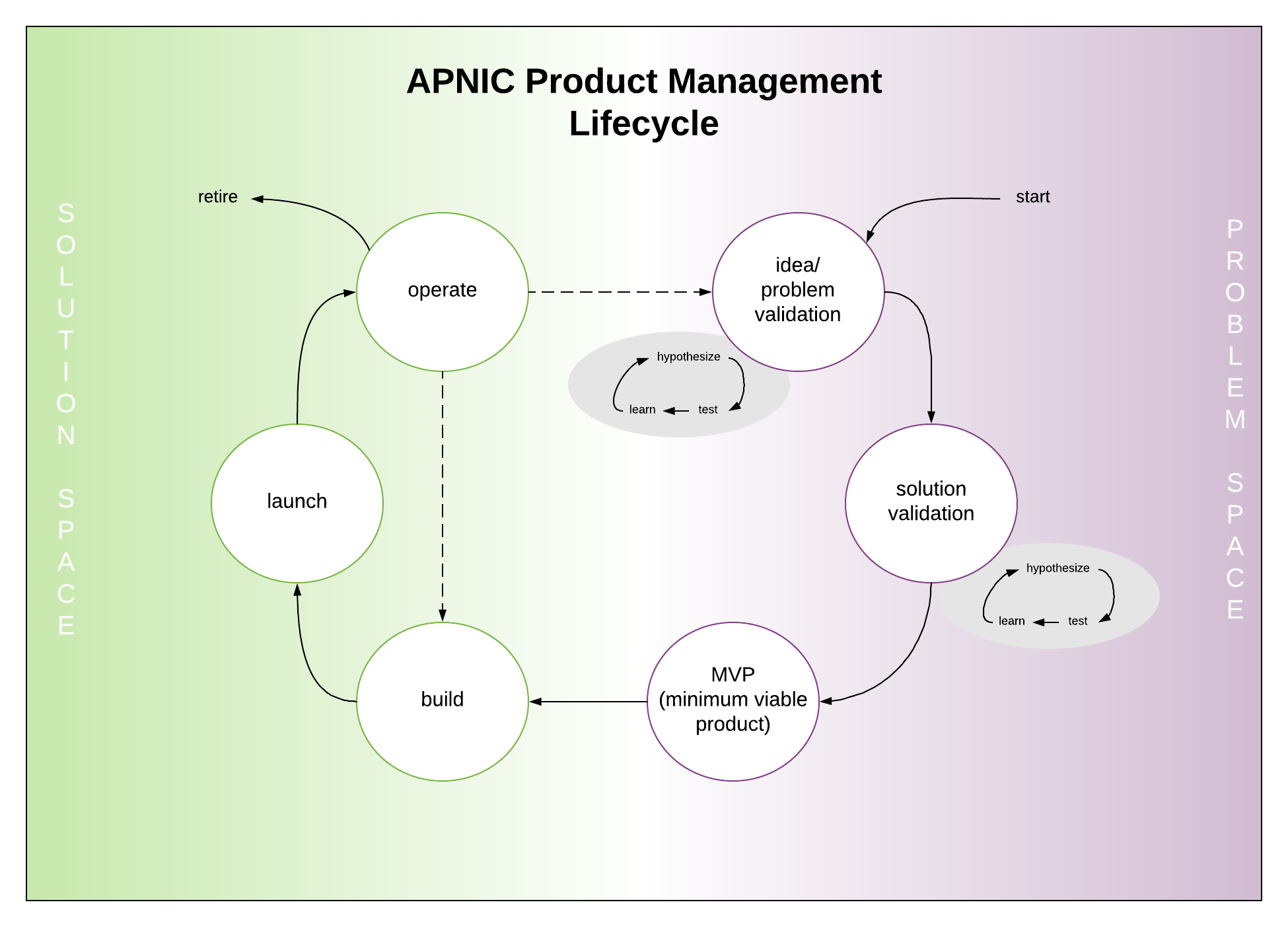
APNIC has recently adopted a product management framework to ‘improve the way we process Members’ and stakeholders’ problems, challenges and needs’. The Product Management team has created a hybrid product management model, customized to better suit APNIC’s roles and processes.
The framework was developed through a process of mapping the development of a new product, optimized for improved problem validation and a greater understanding of end users’ needs. The framework was also required to be lightweight, while maintaining a good fit with the culture of the APNIC organization and community.
The newly adopted lifecycle model is a highly iterative approach, based around hypothesis testing and user feedback. The Lifecycle will be applied not only to new products, but to the development of new features for existing products.

Figure 1: APNIC Product Management Lifecycle.
Problem validation
This is where all new ideas start. A hypothesis for the idea will be established and then tested. Testing often occurs in the form of user interviews; asking users how they currently solve the problem, or if they have that problem at all. Based on this feedback, we can learn how to refine the idea. This validation cycle is repeated as many times as necessary to make sure the problem our idea will solve really exists.
Solution validation
Once we have validated our hypotheses (possibly rejecting some) and redefined the problem based on interacting with users, we need to validate that the solution will fix the problem or address users’ needs.
Again, we hypothesize, test, learn, and iterate as many times as we need to make sure the solution we are proposing really covers users’ needs. This stage often includes developing a mockup; not a full product design, but something we can show to users and gauge their reactions. At this stage we can often get an idea about whether the user generally understands the solution. Using a mockup also helps us gather feedback about user interaction, user interface design, and vocabulary issues.
MVP (Minimum Viable Product)
The MVP is our first build of a product. To decide what goes into the MVP, we prioritize features that solve the most important problems. From there, we choose to include a small set of features that represents the functionality of the product.
At this stage, we are still validating the MVP based on feedback, using our iterative approach.
Build, launch, operate
Once the MVP meets our criteria, we will build, launch, and operate version 1.0 of the product. The criteria for release may be different for each product.
The operational phase of the Lifecycle is also the point from which we can retire products if we discover they are no longer being used, or they no longer solve a problem for our users. Once the effort involved in maintaining a product that is not being used becomes too great, we need to consider new features or retirement.
If we realize that a product could be solving other problems — we take this idea through the Lifecycle, starting from idea/problem validation, just like we would do with a new product. Successful ideas will make their way into further release versions of the product.
Validation, validation, validation
As you can tell, validation is a major part of our Product Management Lifecycle. The Product Management team will be increasing outreach to APNIC Members to participate in user testing and interviews regarding our products from now on. If you wish to be involved, please don’t hesitate to reach out to Adam Gosling (adam@apnic.net) or me (sofia@apnic.net).
The views expressed by the authors of this blog are their own and do not necessarily reflect the views of APNIC. Please note a Code of Conduct applies to this blog.
